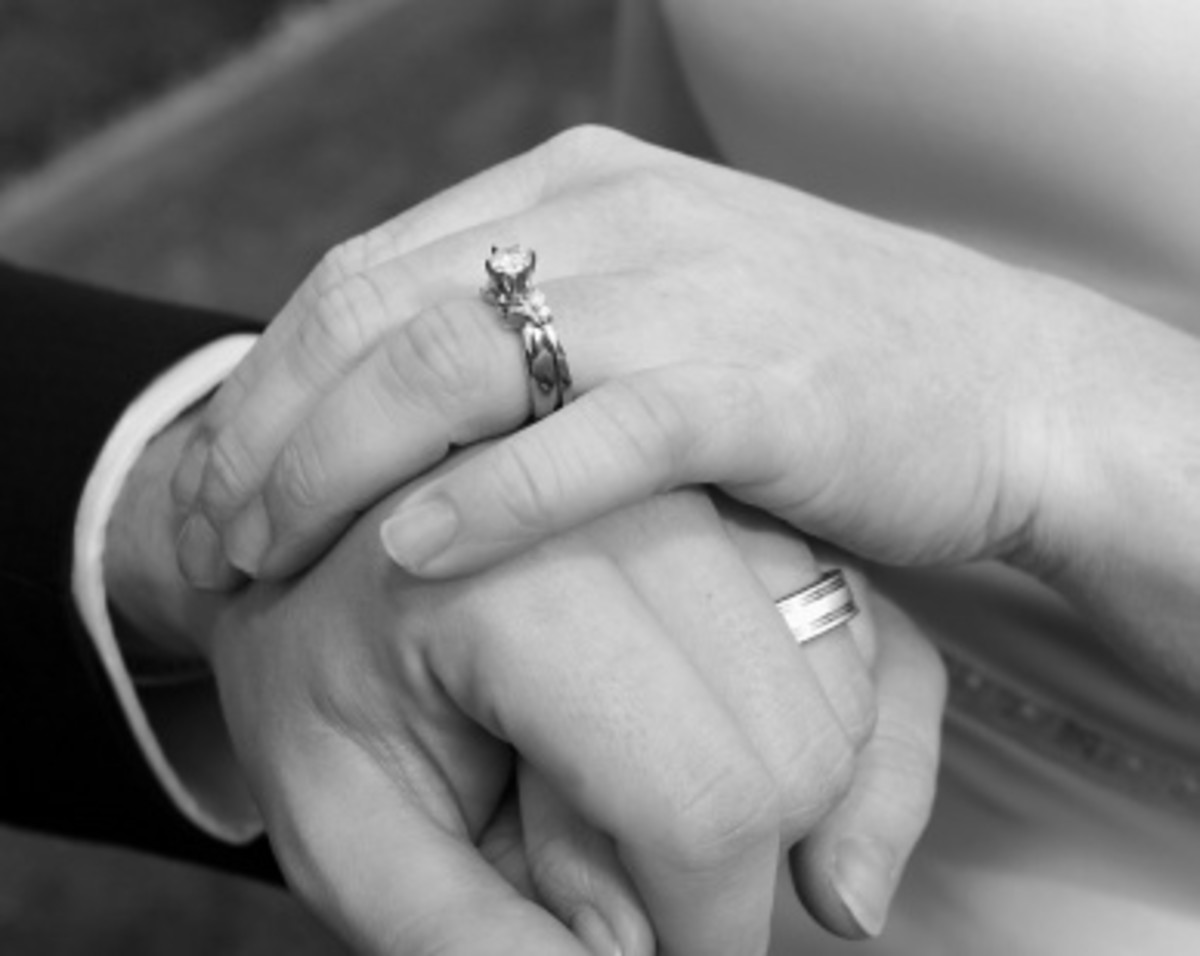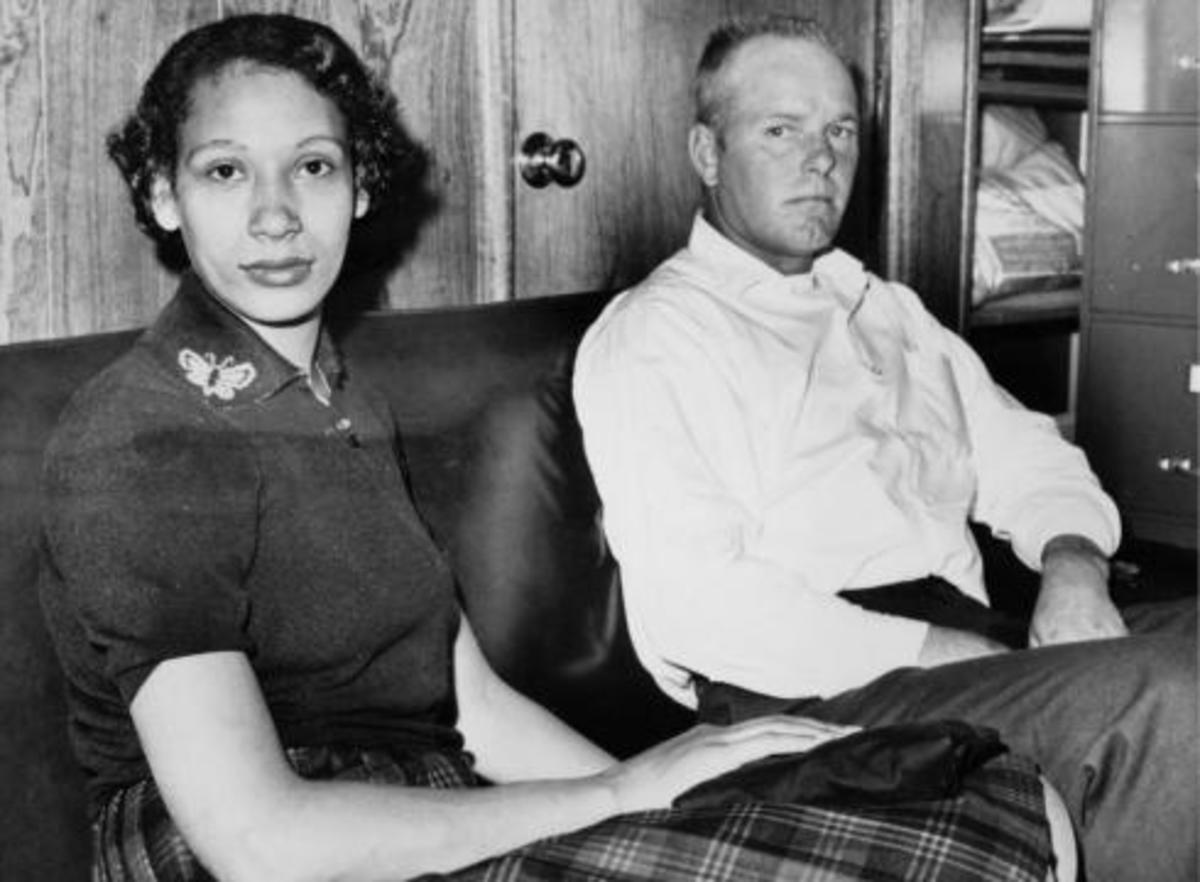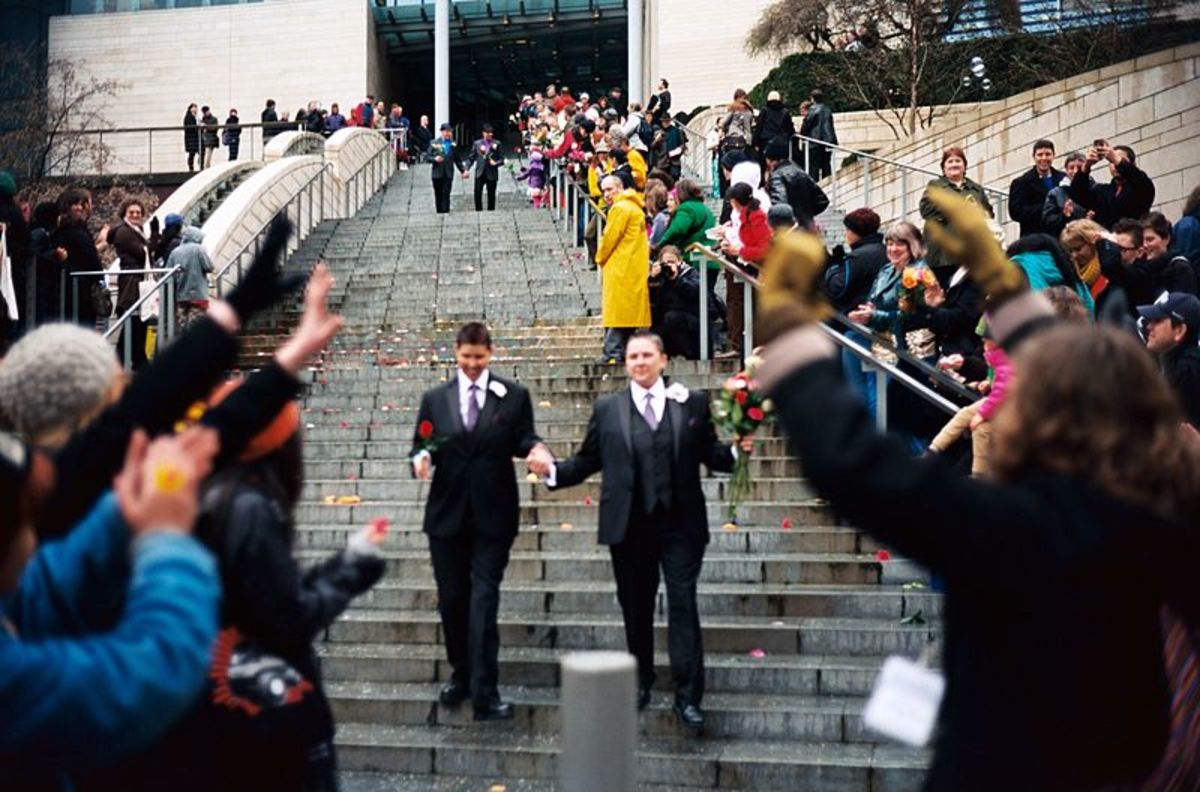The Repeal of DADT, DOMA, and the impact of Gay Marriage
PHILIP CHANDLER

The Repeal of DADT, DOMA, and the impact of Gay Marriage
Since the writer last published a new hub, many changes have occurred in the USA relative to the recognition of gay marriage and the ongoing struggle for full social and legal acceptance and treatment of gay persons by heterosexual Americans. The obscene military policy (and underlying federal legislation) known as "Don't Ask, Don't Tell" (DADT) has been repealed, and gay Americans may now join the armed forces without having to hide their sexual orientation for fear of being "separated" (kicked out). Gay marriage has spread from the recognition of six states (and the District of Columbia) when the writer last posted an entry to this blog in 2010 to 18 states (and the District of Columbia).at the present time. The percentage of Americans who approve of gay marriage has soared to an extent which most gay activists did not think would or could ever occur. While much work remains to be done, particularly with regards to the passage of the Employment Non-Discrimination Act (ENDA), so much has happened legislatively and socially since 2010 that it is sometimes difficult for the writer to comprehend the nature of the American psyche. A brief recapitulation follows:
In December of 2010, a Congressional bill to repeal DADT was enacted. This bill stipulated that DADT would end when the President, the Chairman of the Joint Chiefs of Staff, and the Secretary of Defense certified that repeal of this measure would not harm military readiness. A 60 day waiting period would then follow before the DADT policy and underlying legislation in the United States Code (U.S.C.) would be repealed. On July 6, 2011, a federal appeals court prohibited further enforcement of DADT, and on July 22, 2011, President Barack Obama, Defense Secretary Leon Panetta, and Chairman of the Joint Chiefs Admiral Mike Mullen sent the certification to Congress. This certification set the end of DADT for September 20, 2011.
This marked a massive shift in the attitudes of both public opinion and senior legislators since DADT first went into effect on February 28, 1994. The writer clearly remembers coverage of Congressional passage of DADT on C-SPAN, during the course of which the degree of rancor, bitterness, homophobia, and outright hatred of gay persons was on display. Gay men in particular were demonized as disease-ridden and totally lacking in moral restraint. Legislator after legislator testified that permitting gay persons to serve in the armed forces would result in the collapse of unit cohesion, the degradation of morale, and polarization of attitudes within combat units. Much of the testimony focused on the notion that gay men and lesbians would stare at the naked bodies of heterosexual men and women in the showers and under other closely confined quarters where privacy is almost totally lacking (such as on submarines).
The irony here was blatant. Under DADT, heterosexual service members would have no idea whether or which service members were lusting after them (in their imaginations), because they would not know which of their fellow service members were gay. Consequently, everybody would become suspect in the eyes of the more paranoid heterosexual service members. Many eligible heterosexual men and women who would otherwise have chosen to enlist in the armed forces changed their minds in the knowledge that gay service members would also be serving (sub rosa). The DADT "compromise" satisfied nobody -- following its passage, the number of service members separated from the armed forces actually increased substantially. One single statement to the effect that a service member was gay was sufficient to trigger separation proceedings; furthermore, this ban on such statements extended to persons who were not in the military at all. Theoretically, parents could have been subpoenaed to testify as to whether or not their sons or daughters had ever stated that they were gay.
The premises on which DADT rested also blamed bad behavior on the part of heterosexual service members on the presence of gay service members -- the inability of heterosexual service members to behave themselves in the presence of gay service members was implicitly blamed on the gay service members.
Federal District Judge Eugene Nickerson of the Eastern District of New York issued two thorough and lengthy opinions striking down DADT, on First Amendment and Equal Protection grounds. Unfortunately, his opinions were reversed by a panel of judges on the US Court of Appeals for the Second Circuit, who held that deference to the military was more compelling than the meritorious holdings of judge Nickerson.
The demise of DADT was on the cards long before the 2011 decision. As attitudes towards gay Americans changed throughout the population (both civilian and military), DADT became to be seen as anachronistic and detrimental to recruitment, retention, and the reputation of the armed forces.
The other area in which the right of gay Americans to be treated as equals was far more contentious. This struggle, of course, pertained to gay marriage. In 2010, only six states permitted gay marriage. California permitted gay marriage for a brief period of time following a landmark ruling by the California Supreme Court (in re Marriage Cases, 43 Cal.4th 757 (2008)). Unfortunately, the people of the state voted at the ballot box six months later, by a very narrow margin, to amend the California constitution to prohibit gay marriage; by then, roughly 18,000 gay couples had tied the marriage knot. This constitutional amendment was commonly referred to as Proposition 8. A subsequent decision (Strauss v. Horton 46 Cal.4th 364, 93 Cal.Rptr.3d 591, 207 P.3d 48)) upheld the validity of those 18,000 marriages but declared Proposition 8 to be constitutional. Following the enactment of Proposition 8, gay couples living in California could still enter into civil unions, which provided all of the state benefits of marriage, but they could no longer marry; civil unions provide all of the incidents of marriage, but not the designation of marriage.
At this point, a lawsuit was filed in federal district court by attorneys David Boies and Ted Olson, who had previously opposed each other in the notorious Bush v. Gore, 531 U.S. 98 (2000) decision pertaining to the Presidential election of 2000. Governor Arnold Schwarzenegger and Attorney General Jerry Brown both refused to defend the case, stating that they believed that Proposition 8 violated the Equal Protection Clause of the Fourteenth Amendment. Chief Federal District Judge for the Northern District of California Vaughn Walker was assigned to the case and granted intervenor status to two groups -- ProtectMarriage.com and a rival group, the Campaign for California Families.
Judge Walker, in an exhaustive and fact-intensive opinion running into 136 pages, held that Proposition 8 violated the right of gay persons to marry on both Due Process and Equal Protection grounds. This decision was appealed to the US Court of Appeals for the Ninth Circuit, which upheld the district court decision, but on narrower grounds. The Ninth Circuit also stayed Judge Walker's decision pending the outcome of a petition for certiorari and resultant appellate review by the US Supreme Court. The US Supreme Court held, in Hollingsworth v. Perry, 370 U.S. ___ (2013) (as the case was then known) that the defendant-intervenors lacked standing to appeal the decision to the Ninth Circuit. Chief Judge Roberts delivered the majority opinion, with Associate Justice Anthony Kennedy writing for the dissent. This was a narrow decision, with a five to four vote in favor of denying intervenor status to the two groups involved. Since the defendant-intervenors lacked standing to appeal Judge Walker's decision, the Ninth Circuit opinion was rendered null and void. This meant that Judge Walker's decision once again took full effect and was no longer on hold, because the stay should never have been granted in the first place. Thus, the federal district court judge's decision to the effect that Proposition 8 was unconstitutional was reinstated in full, thereby permitting gay couples to start marrying once again, and this started occurring again shortly after Hollingsworth was handed down by the US Supreme Court on June 26, 2013.
Another gay rights case was heard and decided in the same term as Hollingsworth. The case in question was US v. Windsor, 370 U.S. ___ (2013), and it had ramifications much more widespread than those raised by Hollingsworth. This case had nationwide implications, because it invalidated a Congressional act which forbade the recognition of gay marriages by the federal government, even if those marriages were solemnized in states where gay marriage was permitted.
On September 21, 1996, Congress passed a bill known as the Defense of Marriage Act (DOMA). This was in response to rulings by the Hawaii Supreme Court that gay persons living in that state should be permitted to marry in the absence of a compelling state interest to the contrary (see Baehr v. Lewin, 74 Haw. 645, 852 P.2d 44. May 5, 1993). Congress reasoned that if Hawaii legalized gay marriage, the other 49 states would also have to recognize gay marriages solemnized in Hawaii. This was due to a provision in the US Constitution referred to as the Full Faith and Credit Clause (see Article IV, Section 1 of the Constitution for the text of this Clause).
Section 2 of DOMA guarantees that no state shall be forced to recognize gay marriages performed in states where such marriages are legal. This is intended to head off the possibility of gay couples marrying in Hawaii (or any other state which legalized gay marriages) and then moving to states where gay marriages are not recognized, and demanding to be treated as married by those states. Section 2 of DOMA remains in effect (for the time being), but Section 3 of DOMA has been gutted.
Section 3 of DOMA stated that the federal government would not recognize gay marriages performed in states which solemnized or recognized gay marriage. This was perhaps the cruelest provision of DOMA, because although married gay couples in states which recognize gay marriages received all the incidents of marriage at the state level, they were denied more than 1,100 federal benefits, privileges, responsibilities, and grants at the federal level. For example, the bereaved spouse in a marriage which has terminated due to the death of the other spouse is entitled to Social Security Survivor benefits. Married heterosexual couples may file joint or single tax returns. Veterans’ benefits are paid to surviving spouses. But none of these advantages and privileges were available to gay married couples, despite the fact that their marriage were solemnized in accordance with the requisite procedures in their home states.
This state of affairs soon ended due to the courage and determination of a feisty and determined elderly woman named Edith Windsor. Windsor and her spouse, Thea Spyer, were married in Ontario, Canada, in 2007 (gay marriage is recognized in Canada); they had been in a romantic relationship for more than 40 years. They moved to New York in 2009; at that time, the state of New York recognized gay marriages performed in jurisdictions where such marriages were legal (New York itself legalized gay marriage shortly thereafter). Windsor filed an application for exemption from estate taxes, which are not taxed under federal law when an estate is granted to a surviving spouse (Spyer had left everything to Windsor). Windsor paid the Internal Revenue Service $363,053 in estate taxes, and then sought a refund from the IRS as a surviving spouse. The IRS refused to grant her this refund, citing Section 3 of DOMA, which forbade the US government from recognizing the validity of gay marriages performed in jurisdictions where such marriages are recognized or legalized.
Windsor filed suit against the US government in federal district court in New York City. While this lawsuit was pending, the Attorney General of the United States notified the Speaker of the House of Representatives that the Department of Justice would no longer defend the constitutionality of Section 3, although it would continue to enforce it. The President and the Attorney General had both reached the conclusion that Section 3 violated the Fifth Amendment’s equal protection component (see Bolling v. Sharpe, 347 U.S. 497 (1954); Fisher v. University of Texas at Austin, 11-345 (2013) (slip op.)), and refused to defend Section 3 from constitutional attack. In response to this move, the Bipartisan Legal Advisory Group (BLAG) was created by the House of Representatives; BLAG voted to intervene in the litigation to defend the constitutionality of Section 3.
On June 6, 2012, the trial judge ruled in favor of Windsor, holding that Section 3 violated the equal protection component of the Fifth Amendment’s Due Process Clause; the court ordered the IRS to pay the refund. BLAG took an appeal to the US Court of Appeals for the Second Circuit, which affirmed the district court’s judgment on October 18, 2012.
BLAG and the US Department of Justice appealed to the US Supreme Court, which granted certiorari and heard oral arguments on March 27, 2013. On June 26, 2013, the US Supreme Court struck down Section 3 as “a deprivation of the liberty of the person protected by the Fifth Amendment.” The decision was five to four, with Associate Justice Anthony Kennedy delivering the majority opinion. His opinion contained sweeping elements of equal protection, due process, and federalism, and he wrote about the manner in which Section 3 deprived gay married couples of the dignity afforded heterosexual married couples.
The Court wrote:
“DOMA's principal effect is to identify a subset of state-sanctioned marriages and make them unequal. The principal purpose is to impose inequality, not for other reasons like governmental efficiency... By this dynamic DOMA undermines both the public and private significance of state-sanctioned same-sex marriages; for it tells those couples, and all the world, that their otherwise valid marriages are unworthy of federal recognition. This places same-sex couples in an unstable position of being in a second-tier marriage. The differentiation demeans the couple, whose moral and sexual choices the Constitution protects ... and whose relationship the State has sought to dignify. And it humiliates tens of thousands of children now being raised by same-sex couples. The law in question makes it even more difficult for the children to understand the integrity and closeness of their own family and its concord with other families in their community and in their daily lives. Under DOMA, same-sex married couples have their lives burdened, by reason of government decree, in visible and public ways. By its great reach, DOMA touches many aspects of married and family life, from the mundane to the profound. It prevents same-sex married couples from obtaining government healthcare benefits they would otherwise receive.... It deprives them of the Bankruptcy Code's special protections for domestic-support obligations.... It forces them to follow a complicated procedure to file their state and federal taxes jointly... It prohibits them from being buried together in veterans' cemeteries. For certain married couples, DOMA's unequal effects are even more serious. The federal penal code makes it a crime to "assaul[t], kidna[p], or murde[r] ... a member of the immediate family" of "a United States official, a United States judge, [or] a Federal law enforcement officer,"... with the intent to influence or retaliate against that official.... Although a "spouse" qualifies as a member of the officer's "immediate family,"... DOMA makes this protection inapplicable to same-sex spouses. The federal statute is invalid, for no legitimate purpose overcomes the purpose and effect to disparage and to injure those whom the State, by its marriage laws, sought to protect in personhood and dignity. By seeking to displace this protection and treating those persons as living in marriages less respected than others, the federal statute is in violation of the Fifth Amendment.”
Antonin Scalia wrote a dissenting opinion in which he claimed that the US Supreme Court had no jurisdiction to hear the case because Windsor’s injury had been redressed by the district court and the US Court of Appeals for the Second Circuit. He wrote an embittered and rancorous opinion in which he declared that the majority Justices had, through their opinion, resorted to calling opponents of same-sex marriage "enemies of the human race." He went further, stating that “[a]s far as this Court is concerned, no one should be fooled; it is just a matter of listening and waiting for the other shoe… By formally declaring anyone opposed to same-sex marriage an enemy of human decency, the majority arms will every challenger to a state law restricting marriage to its traditional definition."
Nowhere in the majority opinion were such references made or implied; what courts of law have noted, however, is the abuse and cruelty to which gay men and lesbians have been subjected over extended periods of time. (see Romer v. Evans, 517 U.S. 620 (1996); Lawrence v. Texas, 539 U.S. 558 (2003); Nabozny v. Podlesny, 92 F.3d 446 (1996) (7th Circuit)). Similarly, nowhere in Loving v. Virginia, 388 U.S. 1 (1967) did the majority make such references to racists or to racial separatists; that decision, like the Court's decision in Windsor, was based on constitutional principles of due process and equal protection.
This type of hyperbole and resort to grotesque misstatements about the majority opinion are typical of Scalia’s writing style when defeated. Nowhere did the majority refer to opponents of gay marriage as “enemies of the human race.” Nowhere did the majority refer to opponents of gay marriage as "enem[ies] of human decency." When defeated, Scalia has a habit of attempting to use the English language as though it were an alchemist's stone, capable of transmuting a losing argument into a victory.
As a result of Edith Windsor’s victory, married gay couples now enjoy more than 1,100 rights, benefits, privileges, and responsibilities previously unavailable to them under federal law. A flurry of legal activity has occurred since Windsor was decided, with several other states being ordered by state court judges to legalize gay marriage (e.g. New Jersey) and other states legalizing gay marriage through actions of the state legislatures concerned (e.g. Illinois).
Gay couples who marry in states which recognize gay marriage now enjoy all of the incidents of marriage, as well as the designation of marriage. US Attorney General Eric Holder recently ordered that federal recognition be granted to gay couples who live in states which do not recognize or solemnize gay marriage, provided they were legally married in jurisdictions which do permit gay marriage. Thus, gay couples who get married in states which do permit gay marriage are now free to do so, and may then move to states which do not recognize gay marriage without losing the panoply of more than 1,100 federal benefits which accrue to married couples.
This has created a reverse, mirror image of the state of the law prior to Windsor being handed down. At that time, married gay couples living in states which did recognize and / or solemnize gay marriages received hundreds of state benefits, privileges, and protections of marriage, but did not receive any of the more than 1,100 federal incidents of marriage. Now, gay couples living in states which do not recognize or solemnize gay marriage enjoy the more than 1,100 federal incidents of marriage, but none of the the state incidents of marriage. The law has come full circle, and a flurry of litigation has already commenced seeking to have Section 2 of DOMA declared unconstitutional on both due process and equal protection grounds too.
In 2010, only six states and the District of Columbia had legalized gay marriage. As of the time of writing, 18 states and the District of Columbia have legalized gay marriage, with several additional states appearing poised to do the same.
Opponents of gay marriage are still pressing for a US Constitutional amendment to define marriage as a legal relationship between one man and one woman. However, three quarters of the states are required to ratify a proposed US Constitutional amendment, meaning that opponents of gay marriage would have to secure the disapproval of 37 states for such an amendment to be ratified. Only 13 states would have to approve of gay marriage in order to defeat the passage of such an amendment. Given that 18 states (and the District of Columbia) have already legalized gay marriage, and given that a flurry of litigation and the passage of additional gay marriage statutes is likely to result in the legalization of gay marriage in even more states, this is a dead issue.
Organizations such as the misnamed National Organization for Marriage, which is rabidly anti-gay, are dedicated to trying to sweep back the tide with bucket and broom. They have lost. They just don't know it yet.
Scalia was right – and for that, we should all be thankful!
PHILIP CHANDLER








